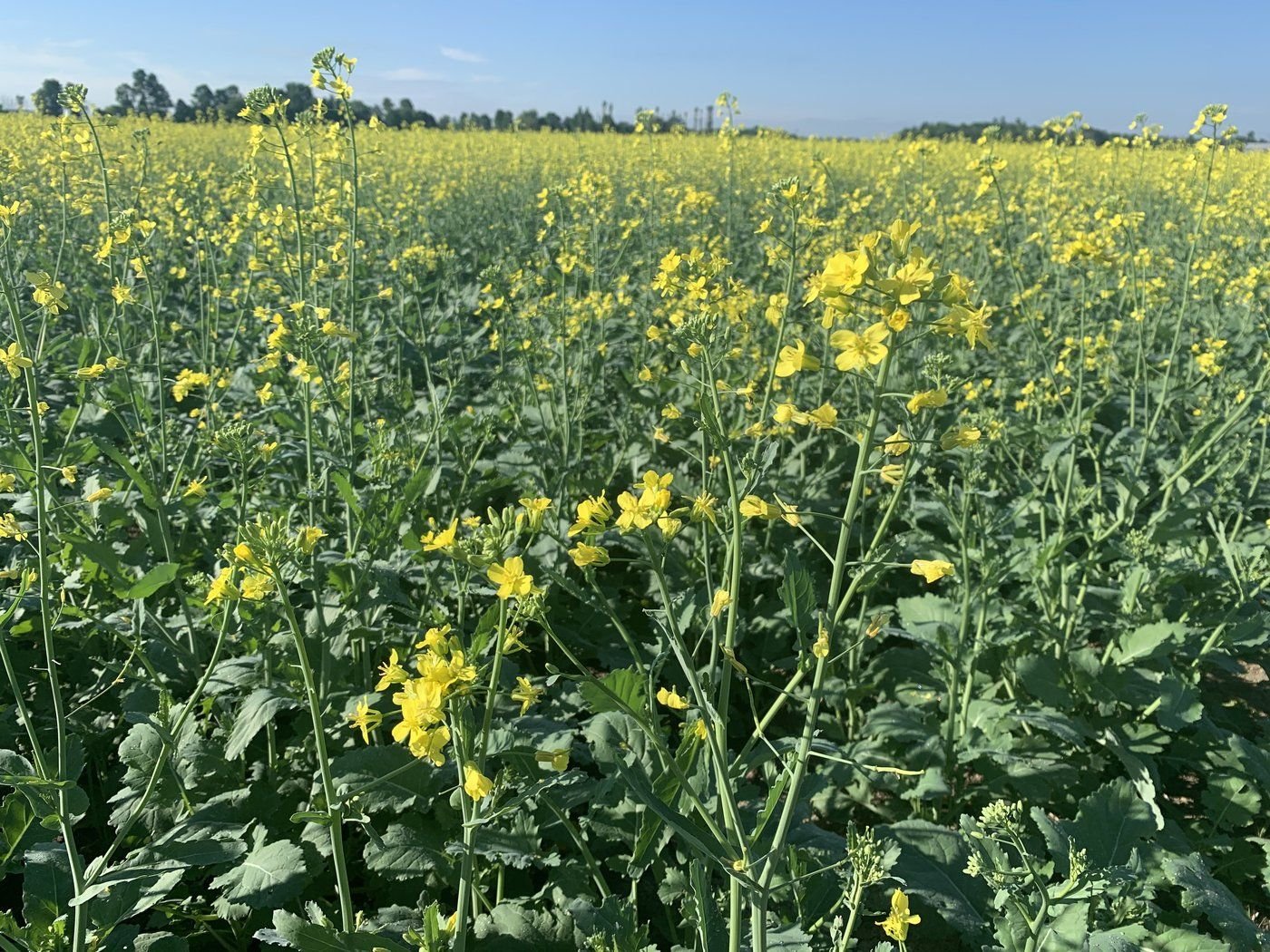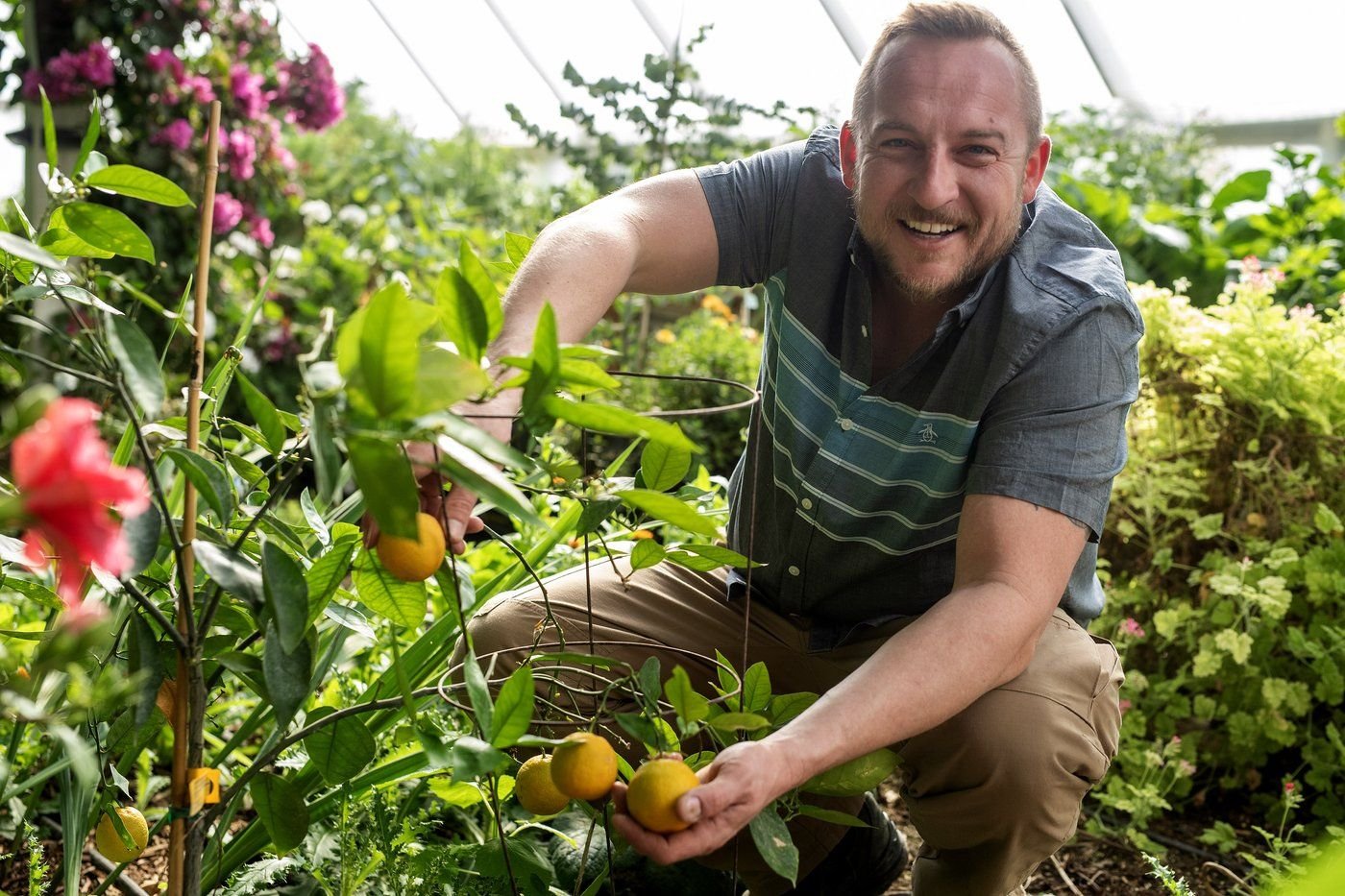Canada’s agricultural fields are in the midst of a transformation.
As the country rapidly warms due to human-caused climate change, farmers are being pushed to reconsider conventional wisdom about what can and cannot survive in this northern climate.
Crops are being planted later in the year than ever before as deadly winter frosts delay their arrival in Ontario. British Columbia berries, devastated by recent extreme weather-induced heat and flooding, are moving to the controlled climates of vertical farms.
A spice commonly found in India is finding a new home in the Maritimes. Tropical fruits sprout from a greenhouse on the prairies.
In the fields and in the greenhouses, farmers are also planting solutions to the generational challenge of climate change. Its success will not only impact Canada’s agricultural sector, but also its dinner table.
Here’s a look at some of the ways climate change is changing Canadian agriculture:
Saffron finds a home in Nova Scotia
Saffron, a spice so expensive it has been nicknamed red gold, is traditionally grown in Iran, India, Afghanistan and Spain, among a handful of countries.
But when Matthew Roy moved from New Hampshire to start farming in Nova Scotia in 2020, he identified saffron as a promising crop, in part due to the changing climate and saffron’s short growing season.
As the climate changes, so do Canadians’ farm fields and tables. #ClimateChange #Farmers
The owner of Coastal Grove Farm began planting saffron-producing crocus bulbs on his property in Upper Port La Tour, N.S., in August of that year. By mid-November, the 15,000 bulbs had produced about 78 grams of the spice.
“We knew it’s going to be warmer here in Nova Scotia,” Roy said in an interview. “And we thought we could bring two new crops to the province, the first would be tea and the second would be saffron.”
In his second year, Roy harvested 172 grams of saffron. In 2022, it was 342 grams. But last year it fell to 66 grams, which Roy said could be due to a wet summer. One hundred grams of the spice sells for about $600, so Roy is not getting rich from saffron yet, but he is optimistic that production will increase.
Margaret Skinner, a research professor at the University of Vermont, studies the plant and has been working with Roy on his saffron farm. While rising temperatures make Nova Scotia more hospitable to saffron, other climate effects such as drought and flooding could be detrimental, she said.
Bashir Ahmad Allie, director of the saffron research station at the Sher-e-Kashmir University of Agricultural Sciences and Technology in India, is not surprised that some parts of Canada can grow saffron, considering how the climate is changing across the country. the world. The spice is now grown in parts of Nova Scotia, Quebec, Ontario and British Columbia.
Allie noted that the climate change that has made saffron cultivation viable in Canada has had the opposite effect in the regions of India where it is grown. Jammu and Kashmir in India has been experiencing erratic temperatures, flooding, heat waves and snow, which have wreaked “havoc” on saffron farmers in the region, she said.
By Hina Alam in Fredericton.
As frost delays, Ontario canola farmers plant winter crops
In Ontario, global warming has delayed the arrival of so-called “killing frosts” and allowed some farmers to explore new crops that can survive the winter season.
Jennifer Doelman says that on her farm in Renfrew County, located near the Ottawa River, she has been planting canola during the colder months, in addition to growing typical spring canola.

“Winter canola was never something we could dream of,” says Doelman, who is also a beekeeper.
“And we’re growing winter canola now, as a response to climate change… because the killing frosts won’t hit until November.”
Doelman says frosts used to appear in October, when temperatures dropped below 0 C for several hours at a time and killed newly planted crops.
But in the last three years it has not seen frost appear until November.
Doelman says the delay has given farmers the opportunity to plant canola in September, immediately after the typical spring canola harvest season. The winter crop can then grow strong enough to withstand the frost when it arrives in November.
“Although they are planted in September, they grow enough to be able to spend the winter under the snow,” he says.
She says winter canola is harvested in July and used for canola oil and biodiesel.
“What’s left once they grind it up is very, very high-quality livestock feed,” he said.
Being able to grow crops during the winter season has helped maintain balance for farmers, who typically have a “mad rush” during the typical five-month summer and spring season to harvest in the fall, Doelman says.
A winter harvest “distributes the workload and risk,” he says.
By Fakiha Baig in Toronto.
As farmers face climate-driven extremes, berry crops shelter indoors
By the time fresh blueberries hit Canadian supermarket shelves in the winter, they may already be a month old after coming from countries like Mexico and Peru.
A team of researchers from Simon Fraser University aims to provide consumers with a fresh, sustainable, locally grown option with a project demonstrating how blueberries can be grown indoors during the winter in British Columbia.
Biological sciences professor Jim Mattsson leads the research. He says berries grown in a strictly controlled indoor environment are fresher and taste better than their imported counterparts. The process uses less water, keeps pesticide use to a minimum and indoor crops have a smaller carbon footprint, he adds.
Canada’s typical blueberry season runs from July to September, and consumers rely on imports of unfrozen berries throughout the winter.
In British Columbia, the industry has been dealing with climate-related challenges in recent years, including heat waves, cold snaps and widespread flooding in 2021.
Mattsson says growing indoors avoids those stressors, while temperature and light can be controlled to prevent plants from going dormant each winter.
“It has been shown that you can obtain more than one harvest a year,” he says. “You can obtain, with the same plants, two harvests a year.”
The process is an example of “vertical growing,” where plants are placed in rows on shelves stacked on top of each other, Mattsson says.
Water and nutrients can be recycled for later use, he says, and recent technological advances make it possible to recycle heat from LED lighting.
The researchers are currently working with British Columbia-based agricultural technology company BeriTech Inc. on the first round of growth trials. After that, Mattsson says they will compete for a $5 million grant to build a prototype facility and expand the project.
The work also involves exploring how berries grown indoors in Canada can compete with imports from an economic perspective, he says.
Mattsson adds that BeriTech is interested in exploring how the blueberry research could be applied to other crops, such as raspberries and blackberries.
By Brenna Owen in Burnaby, BC
Saskatoon bananas? Greenhouse harvest harvested in December
Dean Sopher says he’s pessimistic about the future of the world.
That’s why he bought land near Saskatoon and built his own farm, growing crops and raising livestock to meet his family’s needs.

But Sopher doesn’t grow typical prairie produce. She is growing bananas, oranges, lemons, limes, passion fruit, guavas and figs in a greenhouse she built.
“It’s real, fresh food,” Sopher said in an interview on his farm near Saskatchewan’s largest city.
Worried about worsening food quality and inflation, Sopher says he built his greenhouse about three years ago and harvested his first crop of bananas in December. He says the approximately $60,000 greenhouse was designed to optimize heat and sunlight.
“Once the structure is properly designed, insulated and well constructed, you can grow just about anything here,” he said.
While Sopher has moved the needle on what can grow in grasslands, researchers say tropical fruits are unlikely to sprout in open fields in the future as the climate changes.
However, they say farmers could grow other types of grains and legumes, such as corn and soybeans, in regions where that is not currently feasible.
In a review of the scientific literature, researchers at the University of Alberta found that grasslands have become hotter and drier over the past 120 years. Researchers found there has also been less snowfall and more disruptive weather.
While this could mean more corn and soybeans in some areas, higher temperatures may cause some pests to flourish and create additional challenges for growers.
Associate Professor Emmanuel Mapfumo of Concordia University in Edmonton said farmers are resilient and will continue to adapt.
Some strategies include no-till, crop rotation, growing drought-resistant varieties, and changing seeding rates.
“There is no single solution,” he said.
By Jeremy Simes in Saskatoon.
This report by The Canadian Press was first published April 26, 2024.
